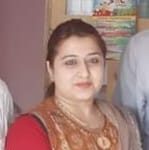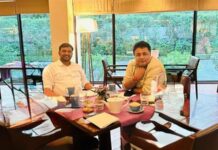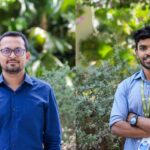In the vast expanse of rural India, where the rhythm of life is often dictated by the struggle against poverty and inequality, there shines a glimmer of hope for rural women. In a recent interview with us, Nishank Chaudhary, a Development Practitioner, shared profound insights into the transformative impact of targeted interventions under the National Rural Livelihoods Mission (NRLM). His words unveil a horizon of hope, where rural women can break free from constraints and embrace boundless opportunities.
Before the inception of NRLM, rural women in India faced significant disparities and challenges. They were often marginalized, with limited access to resources, education, and opportunities for economic advancement. Deep rooted patriarchal norms and cultural practices further restricted their participation in decision making processes and relegated them to roles within the household, devoid of agency and autonomy.
Economically, rural women were disproportionately affected by poverty, lacking access to financial services and opportunities for income generation. Traditional gender roles confined them to unpaid domestic labor, while men predominantly controlled productive assets and sources of income. This imbalance perpetuated cycles of dependency and limited the ability of women to assert themselves economically and socially.
Moreover, social and cultural norms perpetuated gender-based violence and discrimination against women in rural areas. Domestic violence, child marriage, and restrictions on mobility were prevalent, perpetuating a cycle of oppression and limiting women’s ability to exercise their rights and fulfill their potential.
Education was another area where rural women faced disparities. Limited access to schools, coupled with societal expectations prioritizing male education, resulted in lower literacy rates among women. This lack of education further hindered their ability to access information, participate in decision-making processes, and pursue economic opportunities beyond traditional roles.
In healthcare, rural women often faced barriers to accessing quality medical services, resulting in higher maternal mortality rates and limited reproductive health choices. Cultural taboos and limited awareness about healthcare exacerbated these challenges, leading to preventable health issues and decreased overall well-being among rural women.
NRLM has made significant strides in addressing these disparities. More than 10 crore rural households have been mobilized into Self Help Groups (SHGs), totaling around 91 lakh SHGs nationwide. These SHGs serve as micro-institutions at the grassroots level, providing women with a platform to augment household income, access institutional credit, and foster a sense of self-reliance and identity.
Bank loans to the tune of Rs. 7.68 lakh Crore have been accessed by these SHGs as of November 2023 since FY 2013-14. This access to financial resources has empowered rural women to invest in income-generating activities, start their businesses, and become active participants in the economy.
NRLM’s philosophy is centered on recognizing women as key drivers of socio-economic change within their communities. By prioritizing women in primary institutions, NRLM not only acknowledges their agency but also leverages their potential as potent agents of change. Through targeted interventions, such as promoting the Lakhpati Didi Initiative, which encompasses both farm-based and non-farm-based livelihoods, NRLM empowers women led collectives to become significant actors in markets and public spaces.
In essence, the landscape for rural women in India before NRLM was marked by systemic disparities and entrenched inequalities across various domains of life. However, with the advent of NRLM and its targeted interventions aimed at empowering rural women, there is hope for a brighter and more equitable future. By addressing these disparities and providing women with access to resources, opportunities, and support networks, NRLM seeks to catalyze positive change and enable rural women to realize their full potential as active participants in shaping their destinies and contributing to the development of their communities.
















